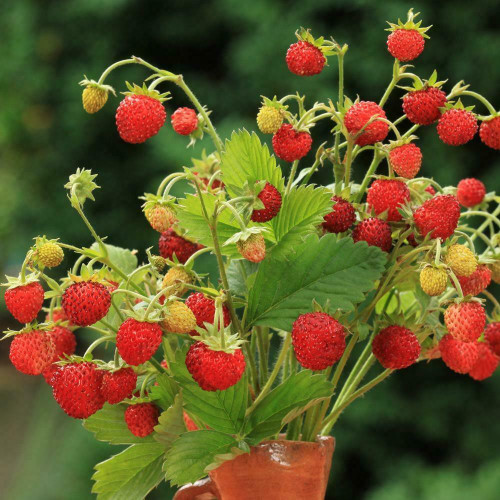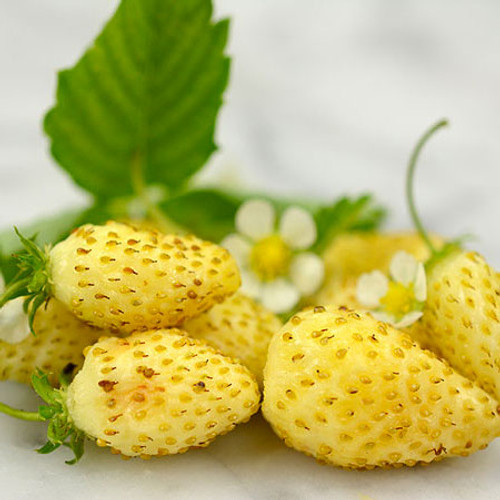Antique German variety yields dainty clusters of berries that are very deep red, and incredibly fragrant! The berries are good-sized for an alpine type, and very sweet and juicy. Makes a superb edible ground cover when planted on 15cm spacing, and wonderful in containers and baskets.
Germination tip: Challenging to grow in tropics. Suitable for growing indoors only. Controlled temp and humidity. Strawberry Seeds germinate best after cold treatment. Place the seed packet into a Ziploc plastic bag or tight-sealing jar. Place that in the sealed container with the seed packet into the refrigerator and leave it there for about a month. After a month in the refrigerator, take the whole sealed container out of the refrigerator but do not open it. Allow it to come to room temperature while still sealed, which will prevent condensation from gathering on the cold seeds. After about a day on the counter, the seeds will have warmed and they’re ready for planting.
Germinating strawberries can be an extended process, and takes somewhere between 1 and 6 weeks. Strawberry seeds are very small, and they should be planted at or near the surface of the soil. Start with pre-moistened seed starting mix in seedling trays. Place 3-4 seeds in each cell, directly on the top of the soil. Gently press tamp the seeds down, but don’t cover them with soil. Mist the top of the soil with water, and keep it just barely moist until the strawberry seeds germinate. Keep the trays in a warm sunny space and ensure the soil stays just barely moist without being soggy. Fertilizing to get them off to a strong start. Feed young seedlings every 2 weeks with half-strength fertilizer. Either way, keep the strawberry plants well fertilized as they’re heavy feeders, and mulch with straw to keep the beds weed-free. If the sun is burning hot, provide some shade.
Growing in temperate climates sow late February onwards in seed trays or pots and only very lightly cover to hide seed. Keep moist and semi-shady. Ideal germination temperature +18C. When the plants get their second set of true leaves, thin them out, leaving three to four inches between plants. Or, replant them into separate containers. Once the plants are big enough to plant in the garden, remember to introduce them to the outdoors gradually. Do not plant strawberries where potatoes, tomatoes, peppers, eggplants, or raspberries have grown within three years.








